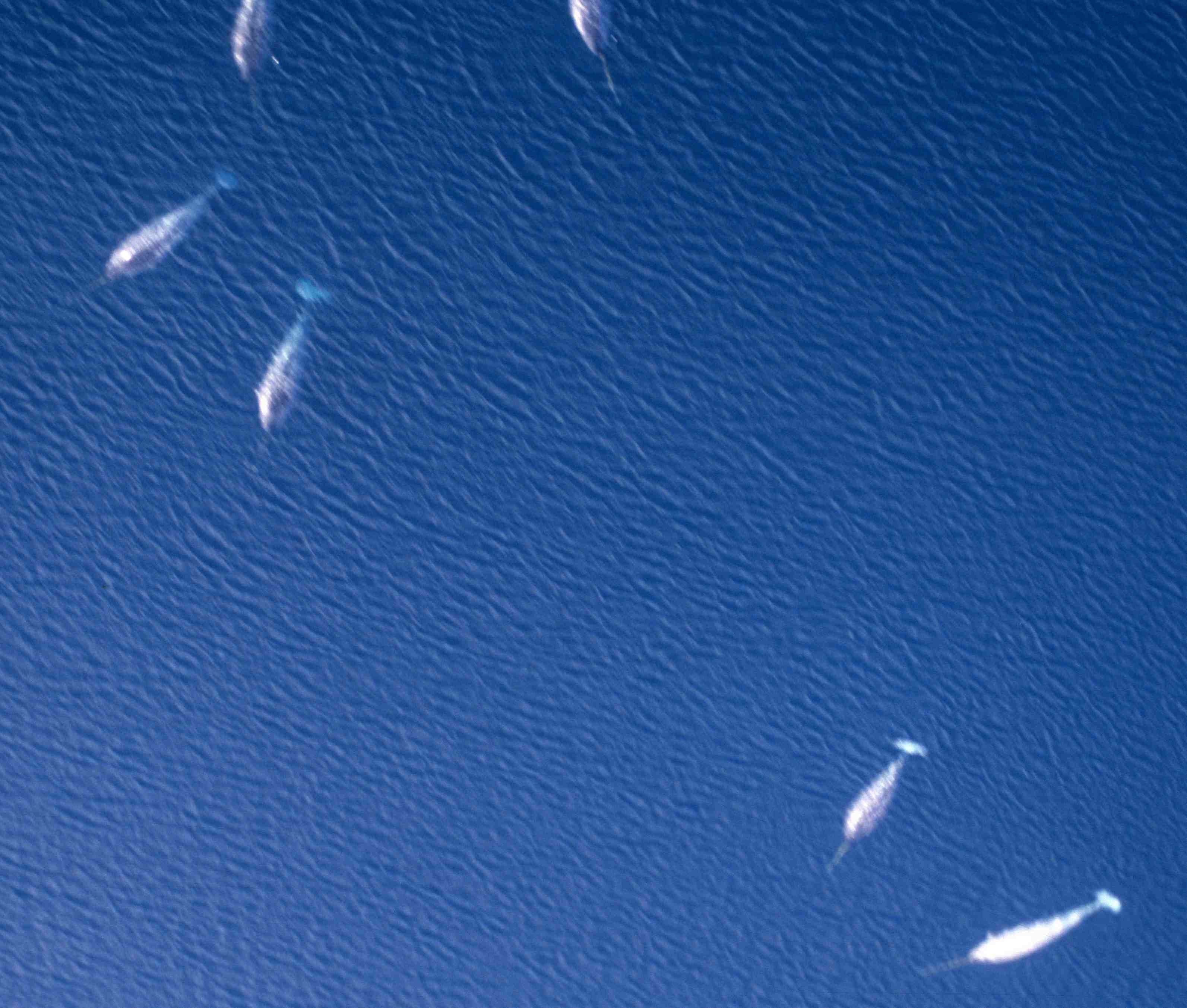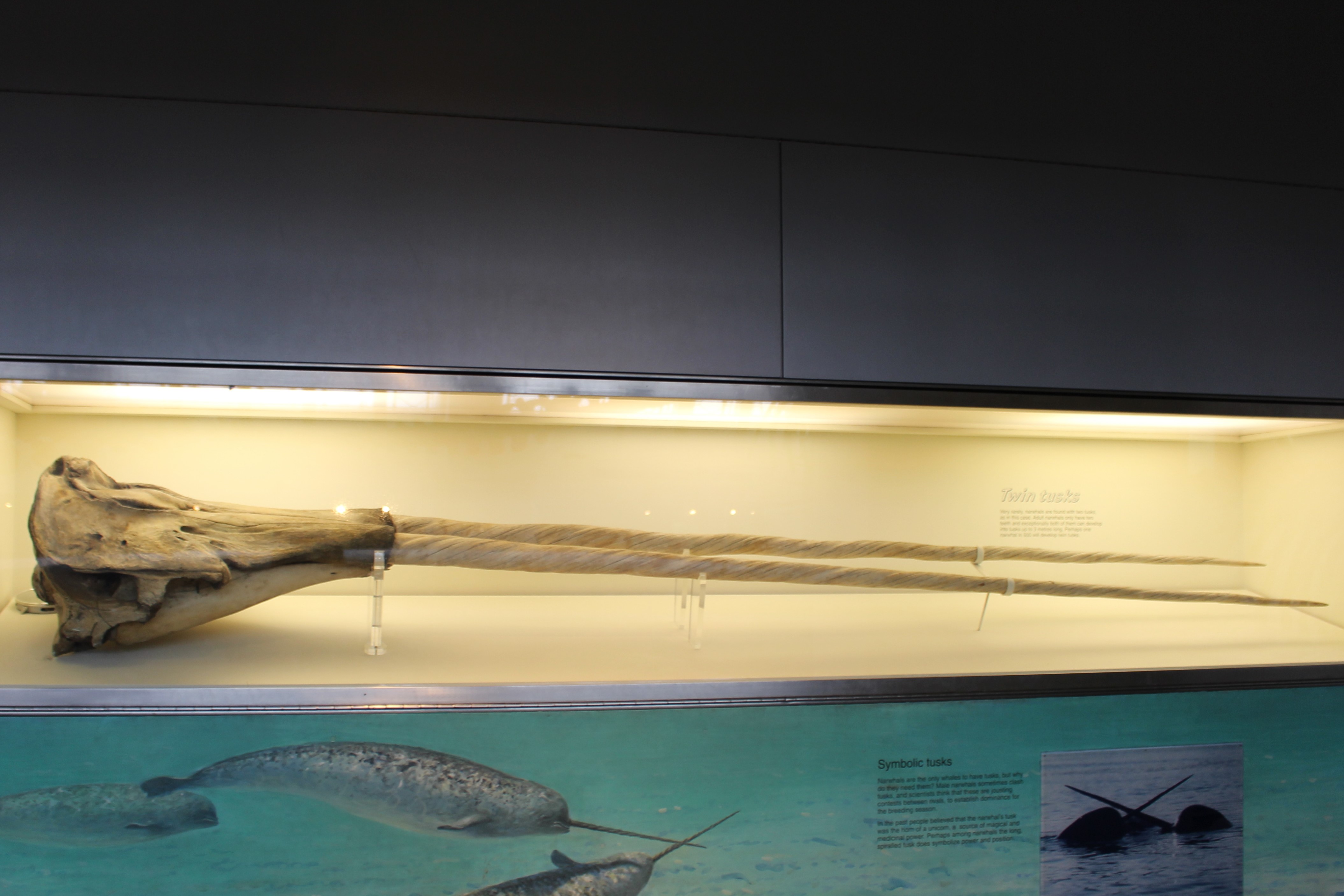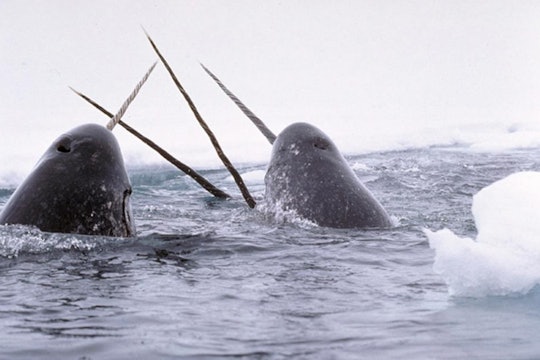Narwhal DNA captured a survival story the last time the glaciers melted
But their success in the past likely won't repeat itself now that ice is melting again
One of the most common ways that scientists study the effects of future climate change is to look into the past. Like a clumsy jewelry thief, fluctuations in Earth's climate over millions of years have left their fingerprints all over: in pollen records, ice cores, and ancient tree rings. Animals also have their own built-in historical record, in their DNA.
Biologists are turning to genetics to understand what might happen to marine mammals – specifically, the mythical and magical narwhal – as the Arctic warms. At the end of the Last Glacial Maximum, about 19,000 years ago, the vast Greenland ice sheet rapidly melted, pushing sea levels up by about ten meters. Scientists know that populations of North Atlantic bowhead whales, another Arctic inhabitant, flourished as ice sheets retreated. But exactly how past climatic change affected narwhals, one of only three whale species in the Arctic, was, until recently, unknown. In a paper published in April in the Proceedings of the Royal Society B, a group of evolutionary biologists led by Marie Louis of the University of Copenhagen's Globe Institute unravels how shifting ice patterns in Arctic seas affected narwhals in the past.

Narwhals in the Creswell Bay (at Somerset Island)
Ansgar Walk via Wikimedia
The researchers analyzed the mitochondrial genomes of 121 narwhals from 11 of the 12 main groups of narwhals (called stocks). Existing tissue samples collected during satellite tagging campaigns or subsistence hunts meant the researchers did not have to chase down wild narwhals. From the samples, the team extracted mitochondrial DNA, which is passed from mother to offspring with no paternal input. This makes it easy to piece together how population sizes changed through history by comparing each narwhal's unique mix of maternal genes.
Louis and the other researchers found that there was very little genetic variation across those 121 narwhals, even compared to the other Arctic whales. Their genetic diversity is on par with that of sperm whales, which are thought to have all descended from a single female ancestor 80,000 years ago.
The shallow narwhal gene pool is a clue to their recent history. It suggests that, like the bowhead whales, narwhal populations increased as the glaciers melted 19,000 years ago. Based on the lack of genetic variety in the narwhal stocks, the researchers estimated that there were just 3,000 female narwhals on the planet up until the Last Glacial Maximum. But after the ice began to retreat, the population exploded to 9,000 female narwhals. This huge group probably all bred with each other.

Narwhal skull with tusks at the Natural History Museum in London, England.
Emőke Dénes via Wikimedia
Louis and colleagues also found that the 121 narwhals could be grouped into 64 genetically similar groups, called haplotypes. But, oddly, the haplotypes were mixed up across all of the stocks. Think of haplotypes like different types of berries: some of the narwhals were blackberries, some were blueberries, and some were raspberries. They are all related, but you would expect the apples to come from the same stock as each other. That was not the case: they were all mixed up like a narwhal fruit salad.
The researchers attribute this genetic intermingling to narwhal behavior. Although the different narwhal stocks occupy different parts of the Arctic during the summers, several share the same wintering grounds. A 2012 study of 45 satellite-tagged narwhals Canada and West Greenland also found that three of them diverged from their traditional migratory routes, which could lead to interbreeding with narwhals from other stocks.
Past narwhals clearly fared well in warming temperatures for the female narwhal population to triple as the ice retreated. So, what does this mean for future narwhal populations? Unfortunately, it is doubtful that they will prosper like their ancestors.
In the past, retreating glaciers opened up more marine mammal habitat with the perfect mix of open water and sea ice for hunting, mating, and raising young. Today, the warming climate and loss of Arctic sea ice has the opposite effect, decreasing available narwhal habitat.
Perhaps the starkest difference is that, unlike 19,000 years ago, climate isn't the only major factor in narwhal survival – humans are. There were likely people in the Arctic before the Last Glacial Maximum, but human populations were nowhere near today's 7.8 billion people. And our negative impacts on Arctic oceans are substantial, even for those of us who live nowhere near them.
The ocean and its inhabitants, including many fish species that narwhals depend on for food, are in constant flux as global temperatures increase and sea ice decreases. This has already had tangible effects on narwhal diets. Less sea ice cover in the Arctic means more large ships passing through narwhal habitat, putting them at risk from noise pollution. And if narwhals shift their migration patterns to track sea ice changes, it is very possible that they come into contact with killer whales, one of their main predators, more often.
Previous episodes of climate change on Earth can be a valuable predictive tool, but the results of this study drive home the fact that our climate future is unprecedented. The narwhal DNA showed that in the past, narwhals have greatly benefited from melting ice. But the Last Glacial Maximum was just that: glaciers were at their maxima, covering much of the globe. Compared to then, our current global sea ice cover is paltry. It will only continue to shrink. And we know that animal populations with low genetic diversity are also not likely to be able to adapt or survive as environmental conditions change. This seems to spell doom twice for narwhals.

